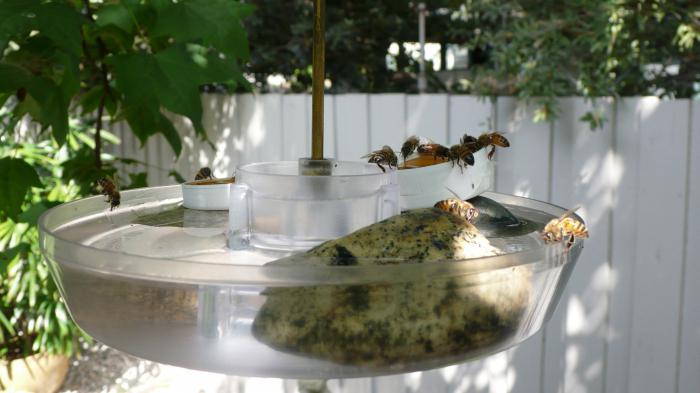Swarming of bees
The instinct of swarming manifests itself on coincidenceidentified as external and internal factors, therefore, to prevent it, you need to carry out a whole range of activities, taking into account local conditions, as well as what kind of bee breeds live in the hives that belong to you. It is important to understand that it is much easier to prevent manifestations of this instinct in bee colonies than to belatedly fight its consequences.
Here are some special tricks that will help suppress the swarming of bees:
1) It is necessary to select in a timely manner from families the surplus of representatives who are not loaded with work, or mature brood.
2) A large number of bees can be taken up by rearing brood, but for this, a young egg-bearing uterus must live in the family.
3) Insects should be maximally loaded with the collection of nectar and the construction of new honeycombs.
4) It is also necessary to expand the nests in a timely manner, shade the hives and intensify their ventilation.
5) To select and multiply need highly productive non-friendly families.
6) The breeding of such bee species that are less prone to swarming.
Selection of bees and brood needs to be done beforeHow will the swallowing bowls appear? And if the royal mothers in the family are laid, then this method will not prevent the swarming of the bees. It is especially important to select in those areas where the period of building up families is longer (for sunflower, lime-buckwheat and buckwheat types of honey-harvesting), but first of all it concerns those areas where before the flowering of the main honey-plants there is no productive harvest, in such cases the honey bee is forced to accumulate its livestock to the offensive of the main honey crop.
In addition to selecting extra bees, prevent swarmingyou can densely load the "population" of the hive by breeding brood and building honeycombs. The more prolific the uterus, the more larvae, and the more young bees will be diverted to care for them.
In families with annual fertile uterus swarmingbees are much less common than in those with older uterus. Therefore, their timely replacement is a good antitheft device that significantly increases the productivity of apiaries.
Also, the swarming of bees can be prevented by loadingtheir work on the construction, collection and further processing of nectar, for this it is necessary to transport the apiary to the places where it is (for raspberries, meadow motley grass, coriander, sainfoin, pink and white clover and the like) in the absence of honey harvest.
In order to maximize the potentialyoung bees on the construction of new honeycombs, with the onset of warm weather, as well as at least a minimal supporting honey, it is necessary to put frames with a honeycomb into the nests of families. For sufficiently strong families, it is necessary to establish it between the cells containing brood, in the middle of the nests. Also, it is possible to transfer the open brood from the nests of weaker "neighbors" to cultivation to the strengthened families. Although it is worth considering that this procedure is quite laborious and can contribute to the spread of diseases.
In carrying out all these actionsincrease the size of the nests. In cases where nest expansion is carried out in a timely manner, this not only promotes the development of families, but also prevents the swarming of bees. And even if this method did not manage to prevent the undesirable process, its terms are considerably delayed and relatively few individuals participate in it.
In conventional hives, designed for 12 frames,prevents swarming timely installation of half-sets. They need to be installed, without waiting for the nest to overflow. If weather conditions permit, this work is performed as soon as the bees cover 10-11 frames. Shading of beehives, increased ventilation - these techniques are performed when outside air warms above 35 degrees and insects, unable to cope with maintaining a suitable temperature inside the nest, fly out of the hive, provoking the instinct of swarming.
</ p></ p>>







